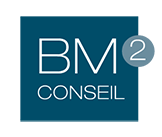Content
On the general ledger, the financial transaction data is segregated, by type, into accounts for assets, liabilities, equity, expenses, and revenues. Hence, the company’s transactions are posted to individual sub-ledger accounts, as defined by the company’s chart of accounts. The transactions are then closed out or summarized in the https://www.vizaca.com/bookkeeping-for-startups-financial-planning-to-push-your-business/ general ledger, and a trial balance is generated, which serves as a report of each ledger account’s balance. The trial balance that is created is then checked for errors and adjusted by posting additional necessary entries, and then the adjusted trial balance is then finally used to generate the company’s financial statements.
A general ledger account is an account or record used to sort, store and summarize a company’s transactions. These accounts are arranged in the general ledger (and in the chart of accounts) with the balance sheet accounts appearing first followed by the income statement accounts. In the previous level one accounting tutorials, we discussed all the aspects of ledger accounts. Transactions were directly recorded in to the respective ledger accounts. In addition, for each transaction, the internationally accepted accounting principles, concepts and conventions (GAAP) which apply thereof will be matched if need be,.
Controlling Accounts vs. Subsidiary ledger
Accordingly, you do not record details of each sales transaction undertaken with various customers in the Accounts Receivable Control Account. Further, the purchase ledger helps you to know the amount you pay to the creditors as well as the outstanding amount. Besides this, you can refer back to the purchase details in case you need to so in the future. Of course, this is just an overview; many other intricacies distinguish these two accounts. Ultimately, understanding their key differences can be helpful for anyone who manages finances in a business setting.
What are the 3 main ledgers?
- General ledger.
- Sales ledger or debtor's ledger.
- Purchase ledger or creditor's ledger.
Thus, the shareholder’s equity appears on the liability side of your company’s balance sheet after current and non-current liabilities. Thus, as per the above table, the credit sales figure of $200,000 would go into the accounts receivable control account. Whereas, the sales details of various debtors like Jack & Co., Mayers, and John can be found in the related subsidiary ledger.
Demand Forecasting Methods: Choosing The Right Type For Your Business
Thus, you get an understanding of your company’s position with regards to debtors, creditors, expenses, revenues, incomes, etc. For example, the outstanding payments against suppliers, payments to be collected from customers, etc. You record the financial transactions under separate account heads in your company’s General Ledger. Now, each of your transactions follows a procedure before they are represented in the final books of accounts. First, the transactions are recorded in the Original Book of Entry, known as Journal. Once the Journal is complete, these transactions are then posted to individual accounts contained in General Ledger.

Laissez un commentaire